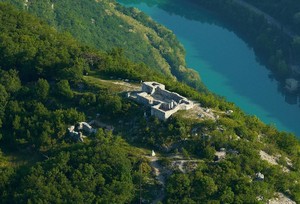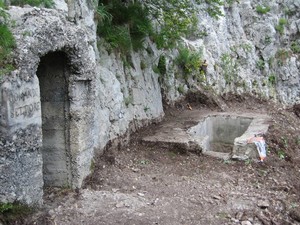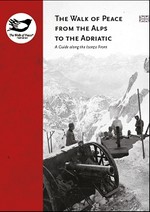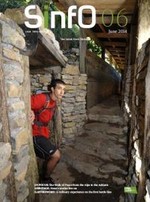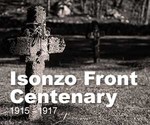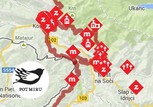Sabotin – Peace Park
The mountain ridge of Sabotin is without question a place worth visiting: its turbulent history, natural landmarks and rich flora and fauna make it a particularly popular excursion destination in the Goriška region, especially as it is accessible for cyclists and hill walkers even in the winter, when most other peaks are covered in snow.
Sabotin, cut from the peak of Sveta Gora by the Soča (Isonzo) Valley, standing proudly on his own and flirting, over Brda and the Karst, with the Alps and the Gulf of Trieste, offers to the hill walker much more that one could imagine just looking up at him from below. There are six routes leading to the top (the North route, the South route, the route behind the corridor, the route under Sabotin, the Briška route and the Šmaverska route). And when you get to know it from one side, you’ll be sure to get a taste for further exploration. In fact, you’ll probably come back again and again, growing to understand it and find peace in its embrace.
There are also five trails especially for cyclists, of which three are circular routes. All the cycling trails are quite demanding, however, so we recommend them for mountain bikes only.
An interesting peculiarity of Sabotin is its flora, as three great European bio-geographic regions meet here: the Dinaric, the sub-Mediterranean and the sub-Alpine. Here, certain plant species reach the outmost limits of their biotic zones. Sabotin is also an important habitat and migration corridor for a wide variety of rare birds. For this reason it has the status of valuable natural feature and of an area of ecological importance and is also included in the Natura 2000 network.
But Sabotin is best known for being an important stretch of the Isonzo Front during the First World War. Because of its location overlooking the town of Gorizia, it was a key defensive point for the Austro-Hungarian army against Italian attacks in 1915 and 1916. Due to its strategic position above the Soča, this hill near Gorica/Gorizia was an important Austro-Hungarian stronghold on the right river bank. In the sixth Soča battle in August 1916, Italian troops took Sabotin, thereby securing their advance to Gorizia. The hill is crisscrossed by a system of trenches and caves built by the Austro-Hungarian and Italian armies to fortify their positions. Particularly interesting are the systems of caves on the ridge, which after the battle were used as artillery positions. Soldiers from many a nation participated in the battles on Sabotin, fighting for either the Italian or the Austro-Hungarian side.
After the Second World War, the state border between Italy and Yugoslavia ran along the narrow Sabotin Ridge, making the hill only partly accessible; this changed with Slovenia's independence. Border markers, bunkers and guardhouses line the ridge. Today, the caves by the former Yugoslav guardhouse have been cleaned up and may be visited. A visitors’ info-point has been set up in the guardhouse, offering information on natural features and on the history of Sabotin, and there is also a museum collection devoted to both the First World War, especially the Isonzo Front, and the war for Slovenia’s independence.
Due to its location, Sabotin Hill offers an excellent panoramic view. This splendid vantage point offers a view over Mt Sveta Gora and Mt Škabrijel, the Vipava Valley, the Kras, the Friuli lowlands, the Goriška brda hills and the Julian Alps. At the south-eastern end of the Sabotin ridge, there is the 535m peak of St. Valentin, where you can visit the restored ruins of a monastery, formerly inhabited by hermits, who abandoned it in the 18th century. Coins found on the site suggest that it was inhabited even in much earlier times. During the First World War, the buildings were completely demolished.
The Sabotin Peace Park offers visitors the opportunity not only to relax in beautiful surroundings, but also, with its caves and trenches from the First World War, to take time to reflect on the absurdity of war and violence. Its aim is to become a messenger of peace and peaceful coexistence among nations.
Traditional events organised on Sabotin to remember the First World War:
- first Saturday in September: trek to Sabotin and visit to the caves,
- first Sunday in September: fair of First World War artefacts.

